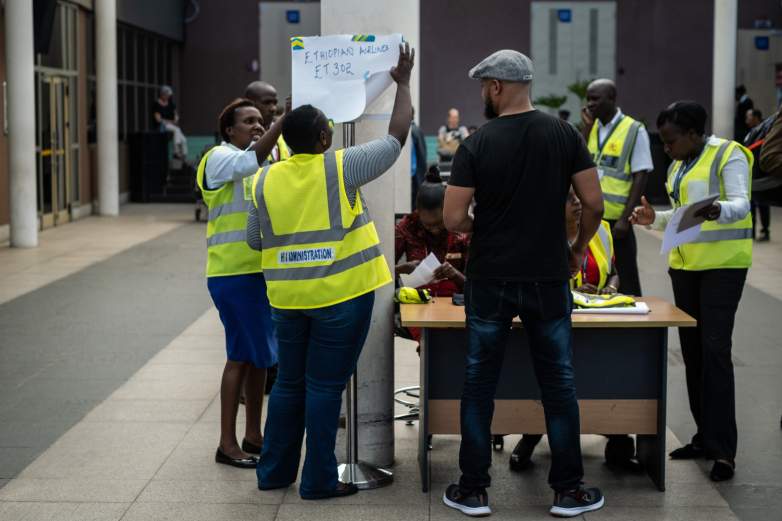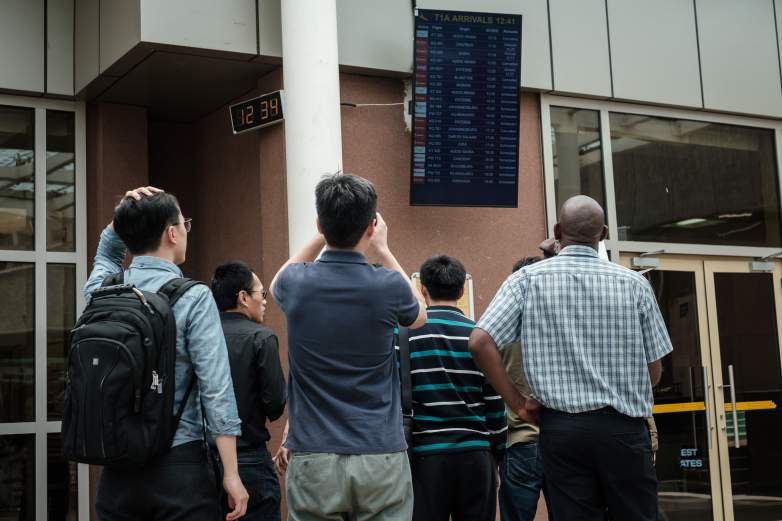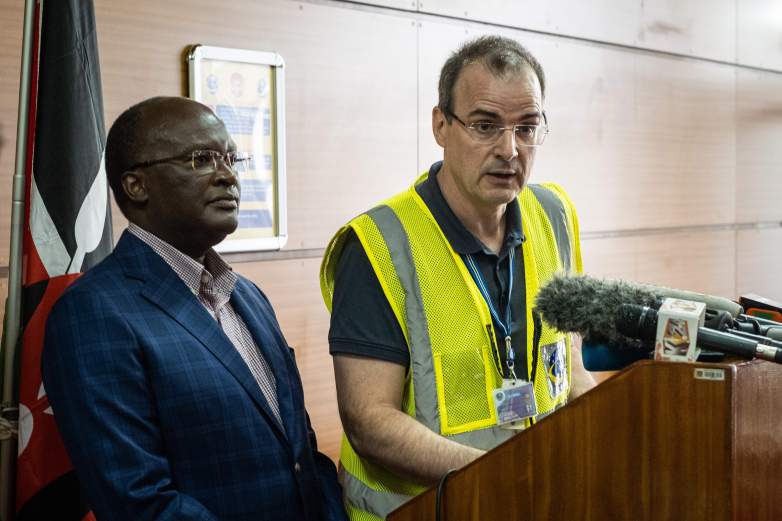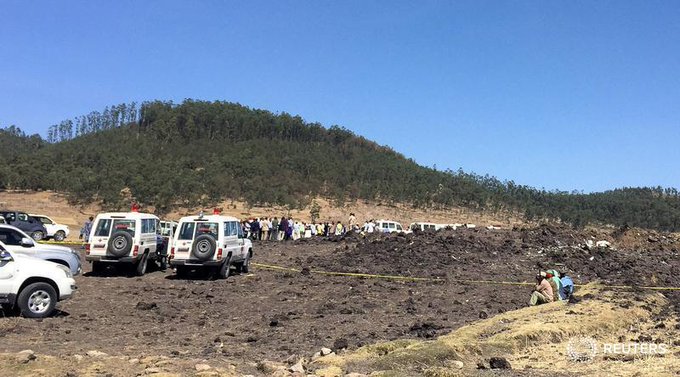
The Ethiopian Airlines plane crash took the lives of 157 people, including 149 passengers, on March 10, 2019. However, what was the cause of the plane crash? Is that known? Could it be terrorism?
People from 35 countries were on board the doomed flight, and eight Americans were listed among the dead. The cause of the crash is not yet known, but here are the details that are clear so far. There is no indication at this point that terrorism could be involved versus mechanical difficulties. In fact, the plane is the same Boeing model as a Lion Air flight that also crashed shortly after takeoff last year, causing mass casualties. (You can read the names of the first victims identified in the Ethiopian crash here.)
“As I said, it is a brand new airplane with no technical remarks, flown by a senior pilot and there is no cause that we can attribute at this time,” the CEO of the airline said in a press conference.
The Ethiopian Reporter indicated that, when asked “whether this is accident might be a sabotage, the managers said that ‘we don’t rule out anything or don’t want to attribute the cause of the accident to anything.'” The site added that the pilot had reported a technical problem and asked to return to the airport but, before he could do so, the plane crashed.
Here are the known clues about cause:
The Plane Crashed Six Minutes After Takeoff

Airport staff install a help desk for the crashed Ethiopia airlines flight at the inernational arrival of the Jomo Kenyatta International Airport in Nairobi, Kenya, on March 10, 2019.
The tragic flight didn’t have much time in the air, so there was an issue right away at takeoff. That will help investigators determine the cause. According to the Associated Press, the plane crashed “six minutes after it took off en route for Nairobi.” The plane was a new Boeing 737 MAX 8.
The cause will be investigated by the Ethiopian Civil Aviation Authority, Ethiopian Airlines, and Ethiopian Transport Authority. According to AP, the state-owned Ethiopian Airlines has a good reputation and “is widely considered the best-managed airline in Africa.”
<hr
The Plane Is the Same Model as Another Doomed Flight
The Ethiopian airplane was the same model as a Lion Air airplane that crashed in October 2018 right after takeoff into the Java Sea, according to the Associated Press. In that crash, 189 people died. It was later determined that the “jet’s airspeed indicator had malfunctioned on its last four flights,” AP reports.
Both planes were a Boeing 737 MAX 8, which is a new model. CNN reported of that the investigation into the Lion Air crash found that its pilots “were engaged in a futile tug-of-war with the plane’s automatic systems in the minutes before it plunged into the ocean.”
The automatic safety system in the plane “pulled the plane’s nose down more than two dozen times,” CNN reported of Lion Air. BBC reported of Lion Air, “the plane’s automatic anti-stalling system repeatedly forced the plane’s nose down, even when the plane was not stalling – possibly due to a faulty sensor.” Procedures that could have rectified the problem and were used on another flight were not used by Lion Air pilots, and Boeing insisted the model is safe, although it is being sued by one of the Lion Air victim families, according to BBC.
The Airline Received the Plane in 2018 & the Weather Was Clear

A Chinese group look at the arrival flight schedule as informing about their colleagues who were allegedly onboard the plane that crashed in Ethiopia, at the Jomo Kenyatta International Airport in Nairobi, Kenya, on March 10, 2019.
Flight Radar 24 has a lot of data about the plane’s trajectory and background. According to the site, it was delivered to Ethiopian Airlines only in December 2018, so it’s a new plane. Here’s the weather data from the time the doomed plane took off:
The weather was clear.
The site reports that the plane “departed Addis Ababa at 05:39 UTC (08:39 local time)” and crashed a few minutes later east of the airport. The flight number is ET302. According to the AP, the pilot “sent out a distress call and was given clearance to return to the airport.”
CNN reported that the pilot reported technical difficulties and the plane had passed a maintenance check.
The Plane’s Vertical Speed Was Unstable

Kenya Airport Authority (KAA) Managing Director and CEO Jonny Andersen (R) and Kenya’s Transport Minister James Macharia give a press conference on Ethiopia airline’s crash in Ethiopia, at the Jomo Kenyatta International Airport in Nairobi, Kenya, on March 10, 2019.
According to Flight Radar 24, the plane’s “vertical speed was unstable after take off….Last position received by FR24 at 05:41:02 UTC.” Daily Mail reports that it’s “extremely unusual because once a plane has taken off the vertical speed should rise or remain stable.”
An aviation expert, Sally Gethin, told Daily Mail this could indicate a stall.
She said: “It’s the rate of climb or descent – the most critical phases of flight. Instability at that point e.g. too slow – could destabilise the aircraft, potentially risking stalling and other hazardous consequences. It might indicate the pilots had difficulty controlling the climb/ascent.” A pilot told Daily Mail, “The small amount of data released so far indicates that after only one minute or so of the flight this aircraft started a descent at a rate of up to 1920 feet per minute down. If the data is correct that is extremely unusual.”
CNN described the plane as “now right inside the ground” and still smoking when he arrived at the crash scene, according to CNN.




